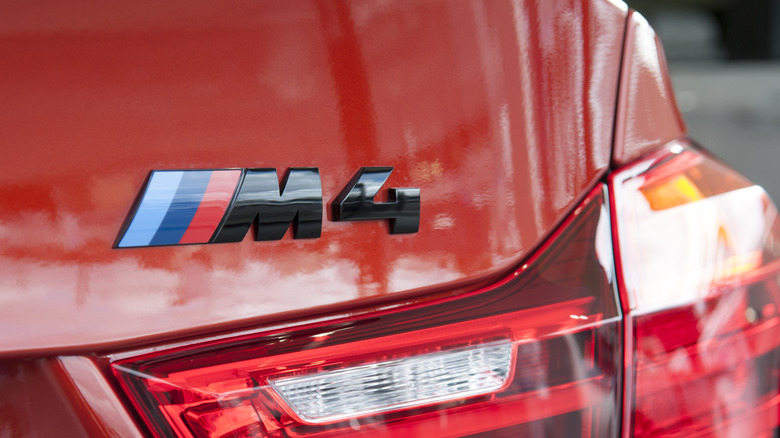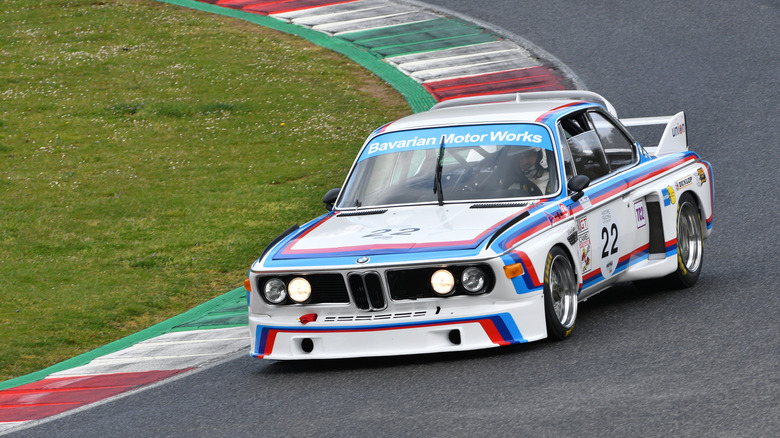What Does M Stand For On A BMW?
There's a reason why these three letters make for such a familiar acronym. BMW has made some wonderfully iconic cars, and as with most long-running manufacturers, the German giant has varied its output in an attempt to appeal to as wide a demographic as possible. Those looking for a particularly high-performance model, for instance, would often add an additional letter to the equation, picking themselves a BMW M.
You might know what BMW stands for and where it got its name, but what of the extra embellishment? The M, BMW explains, stands for Motorsport, and it further declares that "M" is "the most powerful letter." This is the wider series of vehicles that helped advance the brand's reputation in the racing sphere, and as much as fans have surely enjoyed that, they're not just limited to the track.
The Motorsport, in fact, wasn't officially abbreviated in the name of the new BMW racing property at first. BMW Motorsport GmbH was born in 1972, later to be embodied by the beloved three-color BMW M badge that would go on to set the burgeoning family of vehicles apart.
Just over two decades later, the Motorsport would be dropped from the name, when this division officially became BMW M GmbH. Interestingly, then, Motorsport was originally what the name stood for, but as of 1993, it may technically just stand for ... M. Regardless, the former is an appropriate name, when considering the racing legacy some of these models built.
The birth of a racing legend
BMW Motorsport GmbH dates back to 1972, but the world wasn't treated to the first BMW M1 model until several years later in 1978. In 1973, though, the other M model arrived: The 3.0 CSL, itself standing for coupé sport lightweight. A slimline and sporty package would have been an ideal debut for the new racing label, and that was just what BMW Motorsport cooked up. Weighing in at around 2,800 lbs, it offered 206 horsepower from its naturally aspirated engine, which was certainly firing on all six cylinders.
Naturally, it would quickly be refined and improved for racing. So swiftly, in fact, that by 1974, it was packing around 440 horsepower, and achieved excellent results at the Salzburgring that year. It would come to be known as the Ultimate Driving Machine, and that certainly isn't a bad slogan to build a racing empire on.
Advertising hyperbole aside, though, it's impossible to deny just how successful some of the BMW M models that followed would be when it came to racing. The most prominent example of all may be the E30 M3, a legendary model which, unsurprisingly, continues to command an awful lot of money. BMW, rather modestly, reminds us that the E30 claimed "a total of more than 1,400 race wins and numerous championship titles in almost every conceivable series right up to the world championship."

